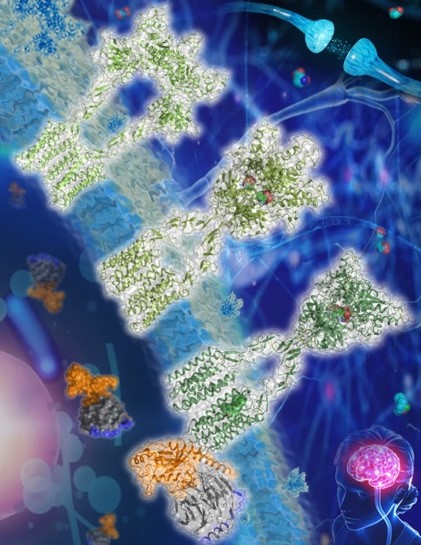Metabotropic Glutamate Receptor Structures Uncover Mechanisms of Class C GPCR Dimerization and Activation
The researchers solved the structures of mGlu2 and mGlu7 homodimers in inactive state, and these structures revealed distinct dimerization modes. Using mutagenesis and cell signaling assays, the researchers found that the transmembrane domain (TMD) dimer interface in the inactive mGlu2 homodimer is subtype-specific and has a critical role in stabilizing the inactive conformation of the receptor. They determined the structures of mGlu2 homodimer in the inactive, intermediate activation (Gi protein-free) and fully activate (Gi protein-bound) states.
Also, the researchers solved the structure of mGlu4 in complex with the Gi protein, which reveals a similar dimeric association mode, suggesting that different mGlus may modulate receptor activation in a similar manner.
Besides, the researchers found that extracellular domains (ECDs) of both subunits are occupied by the agonist, but only one TMD is capable of coupling to G protein. The asymmetric dimer association provides different interaction environments for the two subunits and may cause distinct conformational changes within the two TMDs, which only allow one subunit to recognize the G protein. The G protein then forms a spatial hindrance to block the G protein coupling by the other subunit.
The studies, for the first time, offered a thorough view of receptor conformational changes during the whole process of mGlu activation, gave valuable insights into asymmetric activation of mGlus, and highlighted the importance of cooperativity between different subunits as well as between different receptor domains in controlling receptor function, thereby expanding the knowledge about signal transduction of class C GPCRs.

Figure: Nature reports structures of mGlu2 in different conformational states (Image by Dr. Wu Beili’s laboratory)
Links:
https://www.nature.com/articles/s41586-021-03495-2
https://www.nature.com/articles/s41586-021-03641-w
DOI:
https://doi.org/10.1038/s41586-021-03495-2
https://doi.org/10.1038/s41586-021-03641-w
Contact:
DIAO Wentong
Shanghai Institute of Materia Medica, Chinese Academy of Sciences
E-mail: diaowentong@simm.ac.cn




